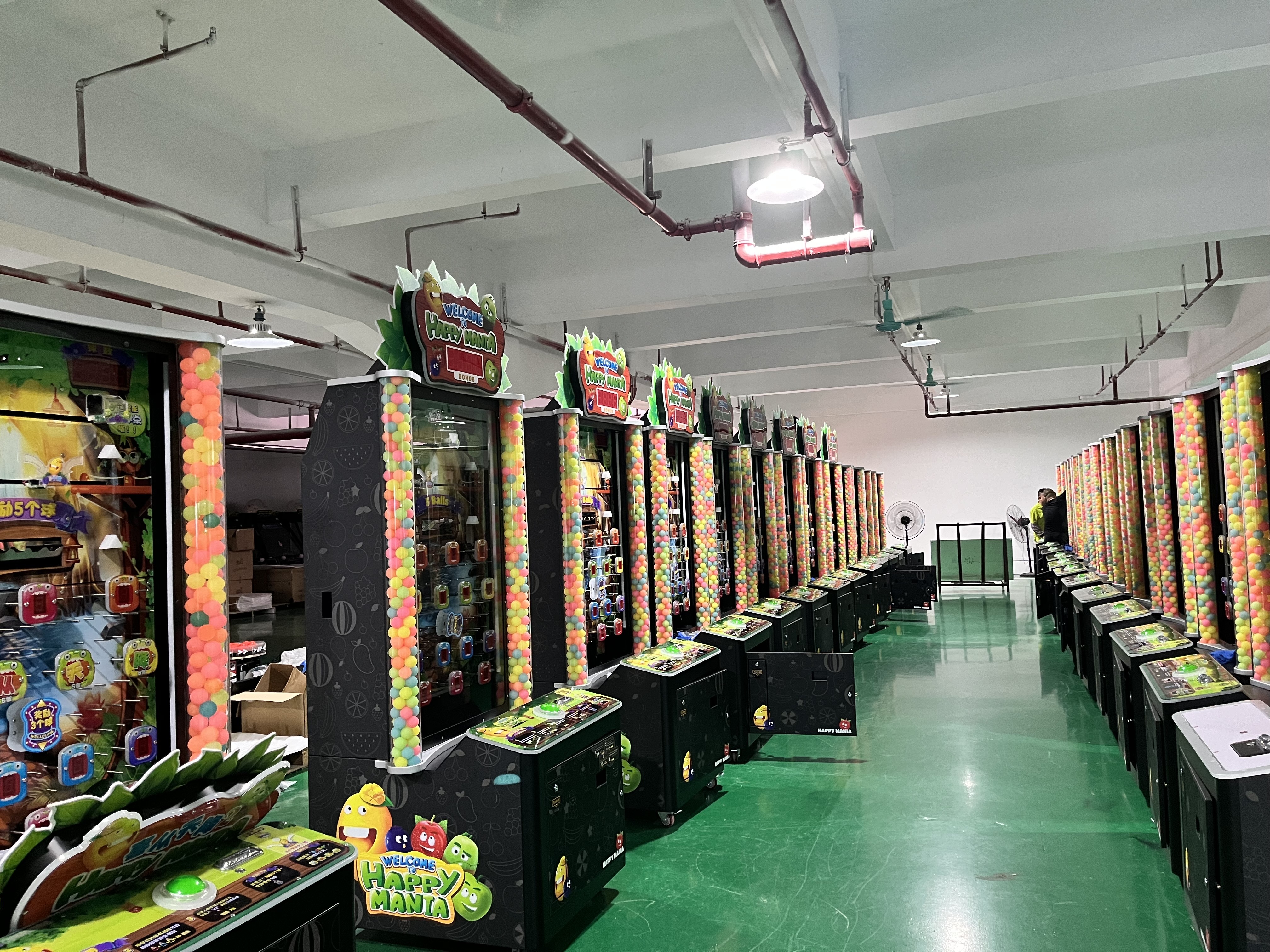17
2025
-
11
DIY Arcade Ball Game Setup: Create Your Own Fun with These Simple Steps
DIY Arcade Ball Game Setup: Create Your Own Fun with These Simple Steps
Table of Contents
- 1. Introduction to DIY Arcade Ball Games
- 2. Why Create Your Own Arcade Game?
- 3. Essential Tools and Materials for Your Arcade Setup
- 3.1. Basic Tools Required
- 3.2. Materials for the Game Board
- 3.3. Electronics and Components
- 4. Step-by-Step Instructions
- 4.1. Designing the Game Board
- 4.2. Constructing the Ball Launcher
- 4.3. Wiring the Electronics
- 4.4. Finalizing the Setup
- 5. Creative Enhancements for Your Arcade Game
- 6. Maintenance Tips for Longevity
- 7. Common Challenges and Solutions
- 8. Frequently Asked Questions (FAQs)
- 9. Conclusion
1. Introduction to DIY Arcade Ball Games
Creating your own DIY arcade ball game can be an incredibly rewarding project that combines creativity, engineering, and fun. Whether you’re an experienced builder or a curious beginner, assembling an arcade game at home brings the vibrant atmosphere of an arcade directly into your living room.
In this guide, we will walk you through everything you need to know to set up your own arcade ball game, from the initial design to the final touches.
2. Why Create Your Own Arcade Game?
Building a DIY arcade game offers numerous benefits. Not only does it provide an engaging project that allows you to hone your crafting skills, but it also ensures that you have a unique gaming experience tailored to your preferences. Here are a few reasons to consider this project:
- **Customizability**: Design the game according to the themes and styles you love.
- **Cost-Effectiveness**: Creating your own game can save you money compared to buying commercial arcade machines.
- **Quality Time**: This project can be a great bonding experience for families and friends.
- **Skill Development**: Learn new skills like woodworking, electronics, and game design.
3. Essential Tools and Materials for Your Arcade Setup
Before diving into the construction of your DIY arcade ball game, gather the necessary tools and materials.
3.1. Basic Tools Required
- **Screwdriver Set**: For assembling various components.
- **Drill**: To create holes for wiring and mounting parts.
- **Saw (Hand saw or Circular saw)**: To cut wood to the required dimensions.
- **Sanding Paper**: To smooth rough edges for safety and aesthetics.
- **Measuring Tape**: Precision is key in this project.
- **Hot Glue Gun**: For quick and durable adhesion.
3.2. Materials for the Game Board
- **Plywood or MDF Board**: This will serve as the base for your game.
- **Wooden Blocks**: For creating barriers and ramps.
- **Paint**: For decorative elements and to give your game character.
3.3. Electronics and Components
- **LED Lights**: To highlight scoring areas or interactive elements.
- **Microcontroller**: Such as an Arduino, to manage the game logic.
- **Sensors**: For detecting ball entry and scoring.
- **Speakers**: To add sound effects and music to enhance the gaming experience.
4. Step-by-Step Instructions
Now that you have gathered all necessary materials, let’s break down the construction process into manageable steps.
4.1. Designing the Game Board
Start with a design layout for your arcade game. Draw a sketch that includes where the barriers, scoring zones, and ball launching area will be. This blueprint will guide you in cutting and assembling your materials.
Using a larger plywood board (approximately 4 feet by 2 feet) will provide ample space for your game. Mark the areas for barriers, holes for scoring, and the ball-launching mechanism.
4.2. Constructing the Ball Launcher
The ball launcher is a critical element of your arcade game. Here’s how to create one:
1. **Base Structure**: Build a small ramp using wood blocks to allow the balls to roll down.
2. **Launcher Mechanism**: Use a spring or rubber band to propel the ball forward. Attach this to a trigger mechanism (like a lever) that players can press to launch the ball.
3. **Testing**: Ensure that the launcher works smoothly and adjust the angle for optimal ball trajectory.
4.3. Wiring the Electronics
1. **Microcontroller Setup**: Connect the microcontroller to your sensors and speakers. Follow the manual for specific wiring instructions.
2. **Installing Sensors**: Place scoring sensors strategically around the scoring holes. Use the drill to create small holes for wiring.
3. **Connect LED Lights**: Position LED lights to highlight scoring zones. Ensure they are wired to illuminate when a score is detected.
4.4. Finalizing the Setup
Once all components are in place, it’s time to put everything together. Secure the game board onto a stable base or table. Test all mechanisms—launcher, sensors, and lights—to ensure everything functions correctly.
5. Creative Enhancements for Your Arcade Game
To elevate your DIY arcade ball game, consider adding exciting features:
- **Custom Artwork**: Paint or sticker your game board with vibrant themes.
- **Sound Effects**: Program different sounds for scoring and other actions using the microcontroller.
- **High Score Tracker**: Incorporate a display to show high scores, encouraging competition among players.
- **Multiplayer Options**: Design the game to accommodate multiple players for added fun.
6. Maintenance Tips for Longevity
To ensure your arcade game lasts, follow these maintenance tips:
- **Regular Cleaning**: Dust and clean the game board to keep it attractive and functional.
- **Check Wiring**: Periodically inspect all electronic connections to prevent failures.
- **Store Properly**: If not in use, store the game in a dry area to prevent damage from moisture.
7. Common Challenges and Solutions
During the setup process, you may encounter a few challenges. Here are some common issues and how to tackle them:
- **Ball Jams**: If balls frequently get stuck, ensure the board is level and that there are no obstructions.
- **Lighting Issues**: If LEDs don’t illuminate, check connections and replace any faulty bulbs.
- **Unresponsive Sensors**: Clean the sensors and ensure they are correctly positioned.
8. Frequently Asked Questions (FAQs)
1. How long does it take to build a DIY arcade ball game?
Building a DIY arcade ball game typically takes anywhere from a few hours to several days, depending on your experience level and the complexity of the design.
2. What type of balls should I use?
Using lightweight plastic balls is recommended, as they work well with the launcher and are safe for indoor play.
3. Can I use recycled materials for my arcade setup?
Absolutely! Recycled materials can add a unique touch and are often cost-effective. Just ensure they’re sturdy and safe for use.
4. Is this project suitable for kids?
Yes, this project can be a fantastic activity for kids under adult supervision. It encourages creativity and learning.
5. What programming language do I need to use for the microcontroller?
Most microcontrollers can be programmed using languages like C or C++. There are plenty of tutorials available online that can help you get started.
9. Conclusion
Creating your own DIY arcade ball game is not just a project; it’s an experience that fosters creativity, teamwork, and fun. From designing the game board to wiring the electronics, each step offers opportunities to learn and innovate.
By following this comprehensive guide, you can create an engaging arcade experience right at home. Transform your living space into a hub of entertainment, where friends and family can gather for friendly competition and enjoyment. Happy gaming!
arcade ball game
Recommended for you
Latest News
Redemption Machines: More Than a Game — They’re Your Brand Promise
Redemption Machines: More Than a Game — They’re Your Brand Promise
Aug 13,2025
Redemption Games Continue to Thrive – and So Do We
Redemption Games Continue to Thrive – and So Do We
Jul 14,2025










